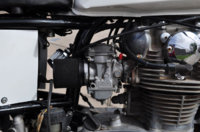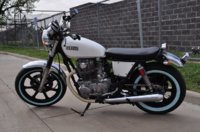Furious D
XS650 Addict
My Ex-500 carbs arrived this morning . Still waiting a the throttle cable so I am going to go thru them and give them a quick cleaning before bolting them up.
Whats the float height supposed to be ? They are off an 94 EX-500. Main jets are 132, I am running pods and Sportser mufflers. I think I used 138's on the 34's I had on before it and seemed like it was a little rich. I have not checked the pilot jets yet.
Whats the float height supposed to be ? They are off an 94 EX-500. Main jets are 132, I am running pods and Sportser mufflers. I think I used 138's on the 34's I had on before it and seemed like it was a little rich. I have not checked the pilot jets yet.


